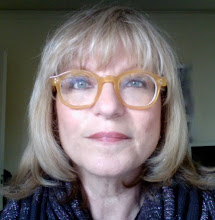Our reaction to Laos was mixed and inconsistent. Shelli, having somehow imagined someplace more like the Vietnam we visited 10 years ago, was rather disappointed, although she loved parts of our visit. Gene liked the Laos experience better because, he thinks, he had few preconceptions.
Luang Prabang, charming as it is at first glance, held fewer charms for a longer stay. The town occupies a peninsula between two rivers, the Mekong and the Nam Khan. A main street runs down the center and secondary streets follow each riverside. The streets that connect these three are more in the nature of walkways, only a few of which can be accessed by cars. Not that there are many cars; one walks or bicycles here, or rides a motor scooter If you’ve got a little farther to go you hire a tuk tuk, a motorbike with a seating area behind big enough for several riders to sit on two benches facing each other. Two or three dollars will get you across town. (The dollar is the preferred currency here; almost everything is quoted in USD).
The UNESCO World Heritage Fund is working on preserving the town, which is something of a bone of contention, as many Lao resent the limitations on building or adding on to existing structures as they wish. As a result, many are moving out of the town itself to the fast growing “suburbs” and renting or selling the traditional Laotian and French colonial buildings to foreigners. One sees many For Rent or For Sale signs (in English), and there is a large presence of French, Swiss, Canadian, Thai, and American shop owners, restaurateurs and small businesspeople. A large proportion of foreign visitors are young backpackers and trekkers of all ages, and many of the old shop fronts on the main street now house tour agencies and internet cafes.
There are 32 temples, called wats, or vats, in town and we visited many of them. A limited knowledge of Buddhism and an equally limited knowledge of Southeast Asian history couldn’t help but limit our understanding of what we were seeing. The mixture of remnants of animist practice, Hinduism and Buddhism was hard to figure out, although we loved the visuals. The temples all have the same elements: a simh the prayer hall, a drum to call monks to prayer, a monastery, and in some cases a library. They also have stupas, the round pointed structures housing relics or the ashes of the departed. The roofs swoop down from a sharp peak to eaves that are finished with naga heads, the naga being the sacred snake that protected the Buddha during meditation. The walls are often decorated with tales, from the Ramayana, a Hindu story seen everywhere in Southeast Asia, to folktales, to stories of Buddha’s life. Like frescos, paintings and stained glass in European churches, these stories, also frescoed or tiled, mosaic or simply painted were recognized by a generally illiterate population.
Buddha images are everywhere, always arranged with the largest at the back and smaller ones in front. He is shown in many positions, one of the most popular in Luang Prabang being seated, with his left hand palm-up in his lap and the right with palm facing in and fingers pointing down, signifying, at least in Luang Prabang iconography, resisting evil. In Vientiane we were told that the same position signified asking for rain. In Luang Prabang the asking for rain position was said to be standing, with both arms straight down at his side. Go figure.
We loved the people, nearly all of whom were sweet, friendly, open and interested. We liked the food, rather like Thai, but different. There was a popular T-shirt sold in the street that said on the front “Same Same” and on the back “But Different”. Applies to a lot of things out here.
What can we say about Vientiane, the capital of Laos? It looks like a town someone started to build and forgot to finish. The streets are broken or entirely unpaved, the buildings are a mix of garish and pitifully decrepit, and the idea of being here in the rainy season and having to negotiate what must be rivers of red mud in the now dusty streets is frightening. But we had a wonderful French dinner in a small restaurant run by a French Canadian who arrived as a backpacker in the ‘80s and stayed, marrying a Lao woman and building a successful business. And the main temple in town, Wat Sisaket, had a glorious cloister around it, an unusual feature for a Buddhist temple, with thousands of tiny niches, each holding two small Buddha figures given as an offering by couples when they marry. We arrived just in time for the chanting signifying the end of the ordination ceremony for a young monk, who received gifts, including a new begging bowl and robe, from family and other monks. And again, the people are so appealing.
We’re in Phnom Penh now, and are surprised to find that we like the city, in spite of all warnings to the contrary. We’ll write more later.
Subscribe to:
Post Comments (Atom)



3 comments:
glad to read you are having fun and enjoy following your itinerary
happy Chanuka !!
Gil
א ליכטיגאן און פרייליכן חניקע
Thanks for a bit of familiar Yiddish, after our struggles with Laotian and Khmer!
Happy Chanukah.
Post a Comment